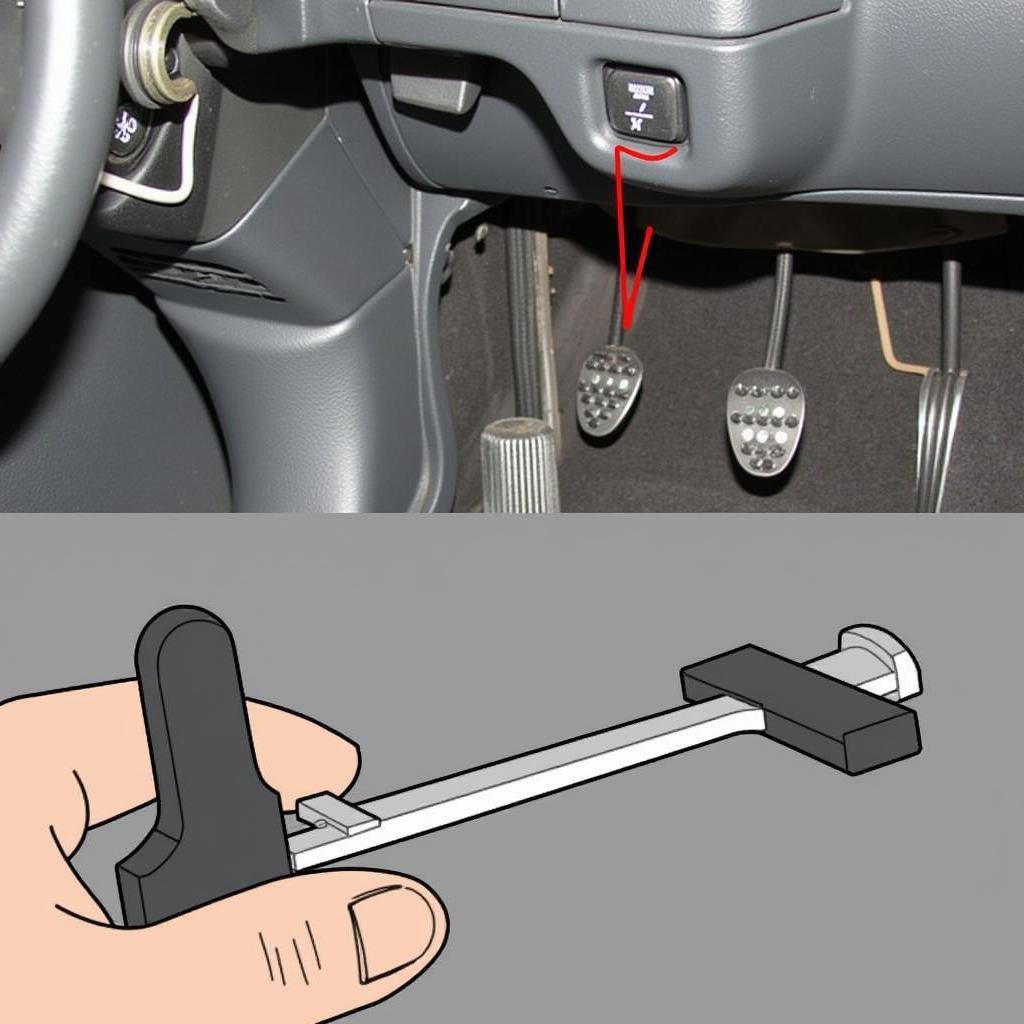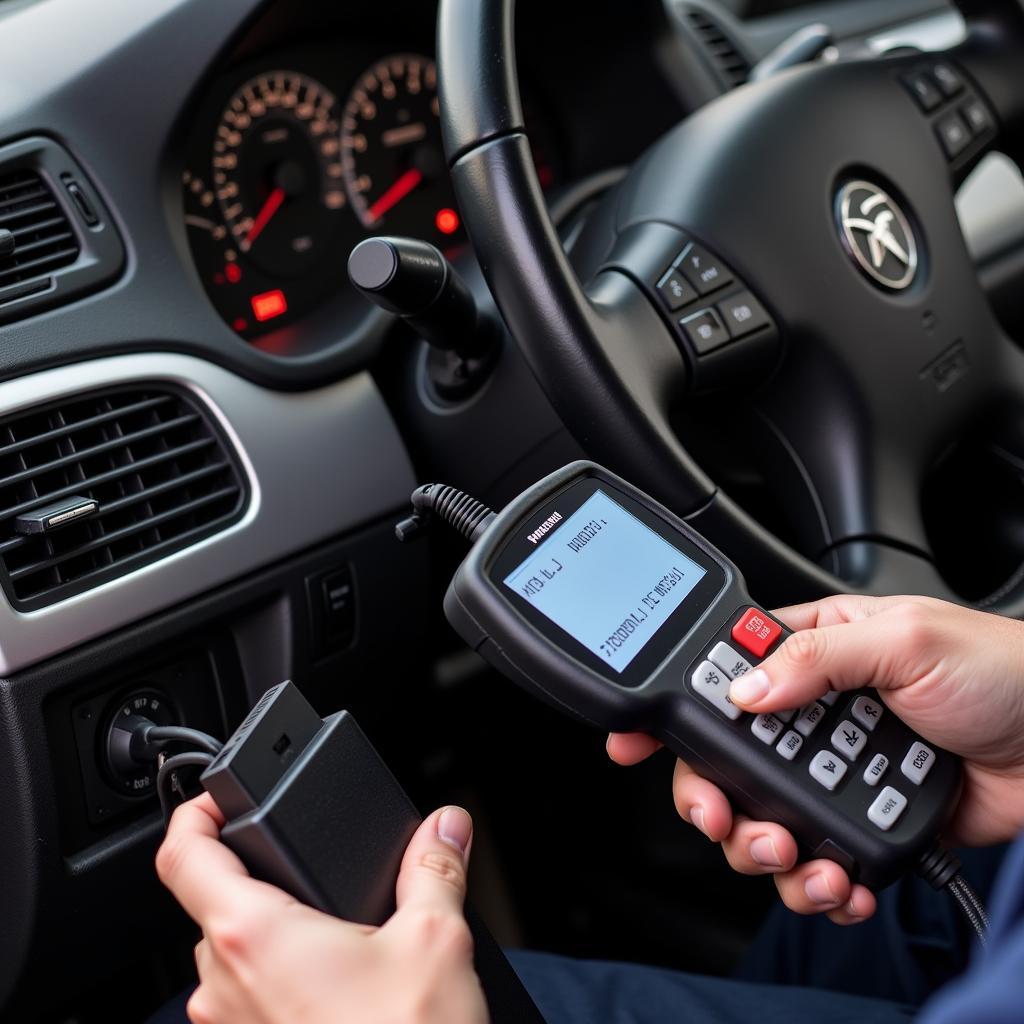If you’re driving a 2003 Buick and see the traction control, ABS, and brake warning lights illuminated simultaneously, it can be a concerning sight. This combination of warning lights usually points to a problem within the vehicle’s braking or stability control system. While it might seem alarming, understanding the potential causes can help you determine the best course of action. This article aims to shed light on the common reasons behind these warning lights in a 2003 Buick and provide guidance on how to address them.
What Causes the Traction, ABS, and Brake Warning Lights to Come On?
Several factors can trigger the simultaneous illumination of these warning lights in your 2003 Buick. Let’s delve into some of the most common culprits:
1. Faulty Wheel Speed Sensor
The wheel speed sensors play a crucial role in the ABS and traction control systems. These sensors monitor the rotational speed of each wheel and relay this information to the vehicle’s control modules. A malfunctioning or dirty wheel speed sensor can disrupt this data flow, leading to the warning lights appearing on your dashboard.
2. ABS Module Issues
The ABS module is the brain behind your anti-lock braking system. It receives data from the wheel speed sensors and regulates brake pressure to prevent wheel lockup during hard braking. A failing ABS module can disrupt the entire system’s functionality, triggering the warning lights.
3. Low Brake Fluid Level
Brake fluid is the lifeblood of your braking system, transmitting force from the brake pedal to the wheels. If the brake fluid level drops too low, it can indicate a leak in the system or worn brake pads. Since the ABS and traction control systems rely on adequate brake fluid pressure, a low fluid level can trigger the warning lights.
4. Brake Light Switch Malfunction
While it might seem unrelated, a faulty brake light switch can also contribute to this issue. The brake light switch activates the brake lights when you press the pedal. However, it also plays a role in signaling the ABS and traction control systems. A malfunctioning switch can send incorrect signals, leading to the illumination of the warning lights.
 2003 Buick Brake Light Switch
2003 Buick Brake Light Switch
5. Wiring Problems
The intricate network of wires connecting the various components of your car’s braking and stability control systems can also be a source of problems. Damaged, corroded, or loose wiring can disrupt communication between sensors, modules, and actuators, leading to the appearance of the warning lights.
Troubleshooting and Next Steps
When facing the daunting illumination of the traction, ABS, and brake warning lights in your 2003 Buick, it’s crucial to take the following steps:
-
Check Brake Fluid Level: Begin by inspecting the brake fluid reservoir. If the fluid level is low, add the recommended brake fluid type as specified in your owner’s manual. However, if you notice a significant drop in fluid level or need to refill it frequently, it’s essential to have your braking system inspected for leaks by a qualified mechanic.
-
Visual Inspection: Conduct a visual inspection of the visible brake system components, including the brake lines, calipers, and connections. Look for any signs of fluid leaks, damage, or corrosion.
-
Consult a Professional: If you’re unable to identify the root cause through basic troubleshooting or if the problem persists, it’s strongly advised to seek professional assistance from a qualified mechanic specializing in automotive diagnostics and repair. They possess the expertise, tools, and knowledge to accurately diagnose the issue and recommend the necessary repairs.
 2003 Buick Diagnostic Scanner
2003 Buick Diagnostic Scanner
Conclusion
The simultaneous appearance of the traction control, ABS, and brake warning lights in your 2003 Buick should never be ignored. It often signifies an underlying issue within your braking or stability control system that requires attention. By understanding the potential causes and taking appropriate action, you can ensure your safety and the well-being of your vehicle. Remember, regular vehicle maintenance and prompt attention to warning signs are essential for a safe and enjoyable driving experience.
